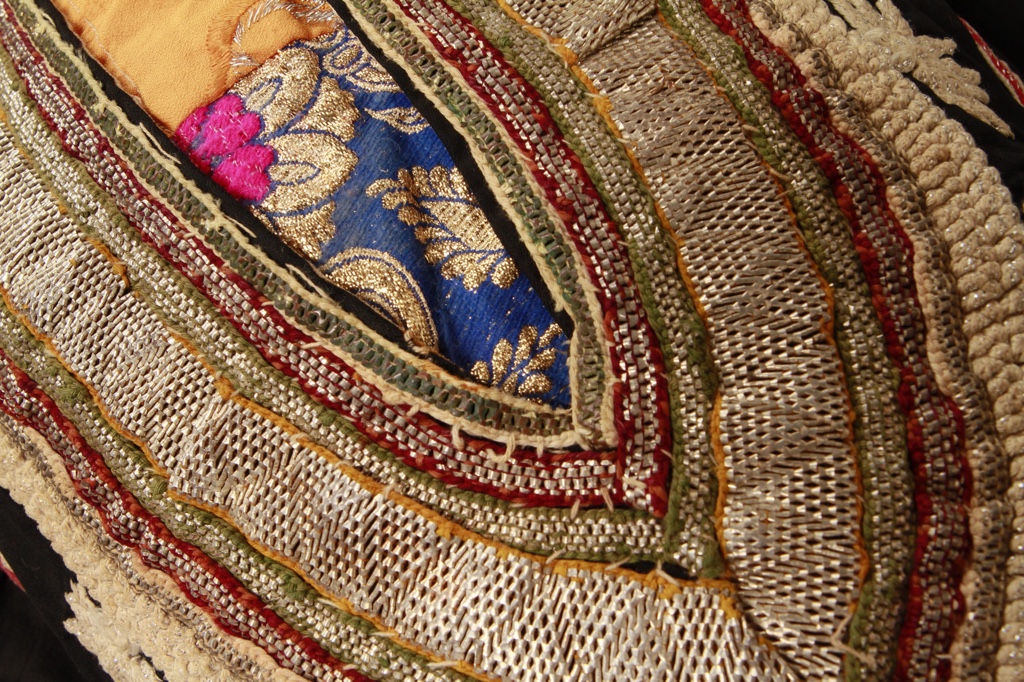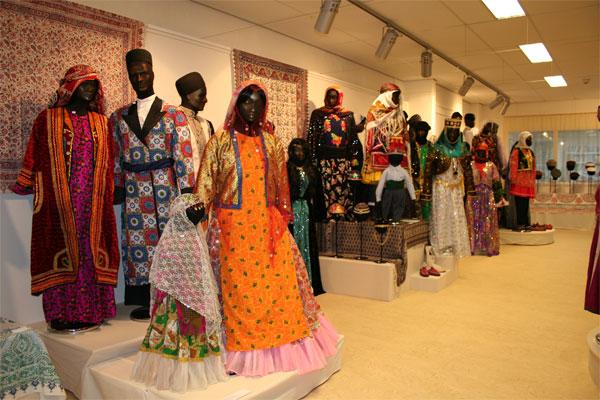TRC gallery exhibition: Dressing Sheba
Glittering embroidered garments and jewellery from Yemen,
17 August until 19 December 2015
 Detail of embroidered neck opening of Tihama dress, Yemen. TRC collection. Photograph: Joost Kolkman
Detail of embroidered neck opening of Tihama dress, Yemen. TRC collection. Photograph: Joost Kolkman
The image of the Queen of Sheba, dressed in exotic garments and jewellery and dancing in front of King Solomon, has fired the imagination of artists for hundreds of years. The Biblical land of Sheba, now known as the Republic of Yemen in the extreme southwest of the Arabian Peninsula, has long been described as the source of abundant trade goods, including emeralds and rubies, purple, embroid-eries, fine linen, coral and incense (Book of Ezekiel 27:16). Dutch traders in the 17th and 18th centuries went to Yemen to acquire silk (stickzijde) and metal threads (goudtraet), silk textiles and much more that came from as far away as Syria, Egypt, Iran, India, China and Indonesia, to bring these goods back to The Netherlands for its wealthy citizens. In the 20th century Yemen was still attracting trade from all over the world. Sadly, in recent days Yemen has become the scene of a bloody civil war and interference from outside.

















